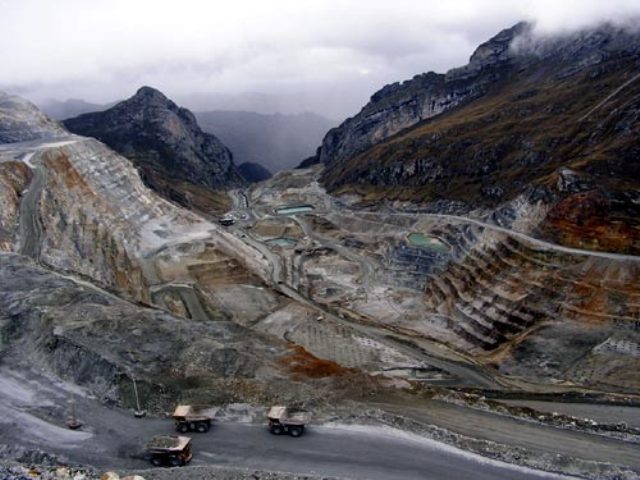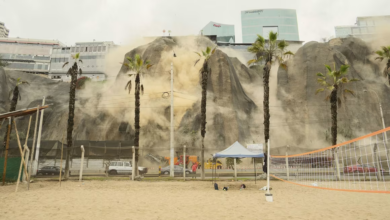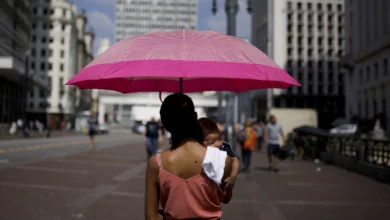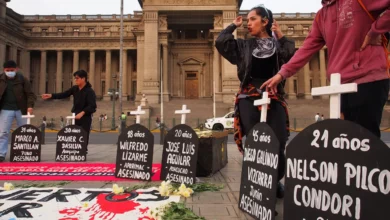
Antamina, one of the world's biggest copper-zinc mines, is facing community opposition and government inquiries after its pipeline burst nearly two weeks ago exposing more than 200 people to a mineral slurry.
Two regulators, the OEFA office of environmental oversight and the mining agency Osinergmin, said on Monday they are investigating the July 25 accident and evaluating penalties as President Ollanta Humala struggles to quell widespread disputes between mines and towns.
"What the state has to do now is define the company's responsibilities," said Juan Narciso, the environment ministry's director of environmental quality. "This isn't just clean it up and goodbye!"
The regional government of Ancash, where the spill occurred, said on Sunday it is asking for fines of at least 2 million soles (US$769,000).
Residents complained of headaches, nausea, irritated eyes and nosebleeds more than a week after the spill.
About 45 ton of mineral slurry leaked at a pumping station after a joint in the pipeline broke. About 3 ton — roughly the capacity of a tanker truck — escaped an area designed to contain leaks, said Antonio Mendoza, environmental manager of Antamina.
Antamina —14,000 ft (4,300 m) high in the Andes — is owned by global firms BHP Billiton Ltd , Xstrata , Teck Cominco Ltd and Mitsubishi Corp . Antamina has invested more than $3 billion to build and expand the mine.
Hilario Moran, president of the peasant community of Cajacay, said the slurry sprayed 80 feet (25 m) into the air as he and about 200 other untrained locals rushed to stop it from contaminating the nearby Rio Fortaleza – an important source of water for dozens of agricultural communities.
"Now I'm very worried about the health of my people," said Moran.
Antamina's Mendoza said the contents of the pipeline weren't toxic and compared them to liquid soap.
"Obviously if you get soap in your eyes it will irritate them, but it's not really going to hurt you," Mendoza said. "That's how it is with the concentrated material."
But according to a company document made public by the Peruvian newspaper La Republica, the mix is "very toxic" and besides copper and zinc includes sulfur, arsenic, silica, lead, sulfur, iron sulfide, and crystalline silica.
The company said 210 people have received medical treatment, including 42 who had to be hospitalized. All have been released, it said.
Peru's health agency has taken blood and urine tests of some people affected and say results will be released Friday.
One elderly woman who lived nearby died a day after the accident. Antamina said in a communique she died of natural causes. A health official said she was buried without an autopsy.
Tighter rules?
The environment ministry, meanwhile, is looking at tighter regulations for mineral pipelines like Antamina's 12-year old duct, which is considered the best way to move metals 186 miles (300 km) from Peru's mineral-rich Andes to the Pacific Coast.
"We'll have to look into new requirements with respect to this kind of pipeline," he said.
Narciso said high pressure in the pipe could be a problem, potentially rupturing the joint and rendering the catchment area inadequate as the leak sprayed instead of just spilling.
The spill did not impact operations as the company quickly installed an auxiliary line.
Antamina produced 333,700 ton of copper and 235,400 ton of zinc last year.
The river has not shown signs of contamination, Narciso said.
"The people protected the body of water," he said. "If they hadn't … then this would be much more complicated because the river would be a source of contamination."
Humala wants to usher in an era of "new mining" that can coexist with the environment and benefit poor rural communities. He recently proposed making water a constitutional right.
But he has been dogged by more than 200 conflicts over natural resource extraction in Peru that threaten more than $50 billion in investments over the next decade. Nine of those disputes involved Antamina, according to Peru's human rights office.
Antamina said via its Twitter account over the weekend that it was 98 percent finished with cleanup.
Erick Mautino with the regional government of Ancash, said Antamina's underplayed the gravity of the spill.
"There should be a system activated to turn the pipeline off whenever there's a leak," he said. "We are in no way opposed to mining so long as it's responsible."
Moran said it took hours for Antamina to turn the duct off.
"They assured us there wouldn't be spills like this … but it doesn't matter anymore because we're going to demand the company leave," he said.




